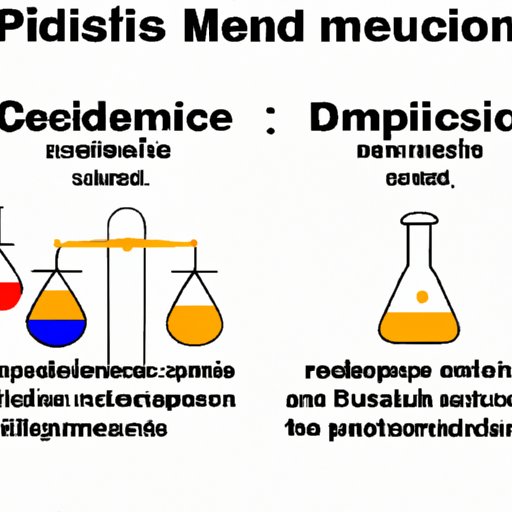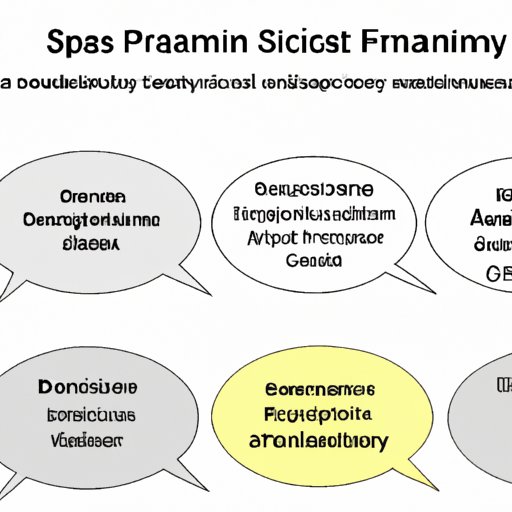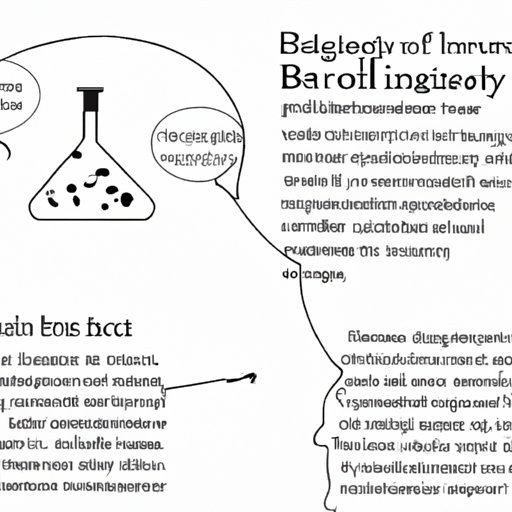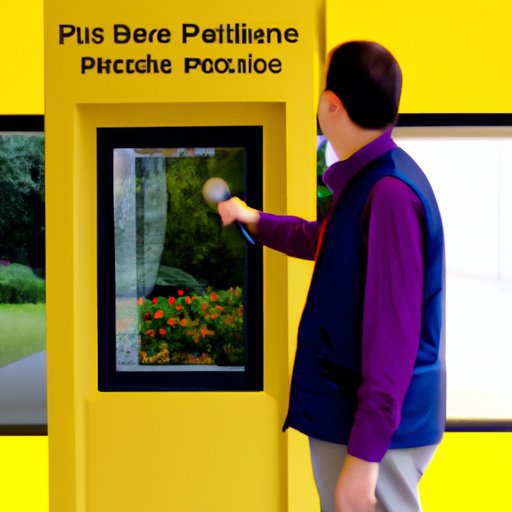Introduction
The distinction between science and pseudoscience can be difficult to define, yet it is essential for understanding how each field of study works and what implications they have for our lives. Science is a systematic approach to acquiring knowledge that relies on observation and experimentation to test hypotheses and draw conclusions. Pseudoscience, on the other hand, is based on unfounded beliefs or claims that cannot be supported by empirical evidence. In this article, we will explore the key differences between science and pseudoscience and examine their implications for public policy decisions.

Compare and Contrast Scientific Method to Pseudoscience Methods
The scientific method is a well-established process used in scientific research to acquire new knowledge and solve problems. According to the National Science Teachers Association, it involves making observations, forming hypotheses, testing hypotheses through experiments, analyzing data, and drawing conclusions. This method requires that all steps are carried out systematically and that results are documented and shared with other scientists for evaluation.
In contrast, pseudoscience methods are not based on systematic processes and lack the rigor of the scientific method. They often rely on anecdotal evidence rather than empirical data and fail to account for potential sources of bias. For example, many pseudoscientific claims are based on personal experiences or beliefs rather than objective evidence. Additionally, pseudoscience does not adhere to accepted standards for scientific research, such as peer review and replication of results.

Analyze Examples of Scientific and Pseudoscientific Claims
To better understand the differences between science and pseudoscience, it is helpful to look at examples of each. Scientific claims are based on evidence and are supported by the scientific method. For example, the claim that human activity is causing global warming is supported by evidence from multiple scientific studies.
Pseudoscientific claims, on the other hand, are not based on evidence and are often impossible to prove. A common example of a pseudoscientific claim is that homeopathic remedies can cure diseases. While there is anecdotal evidence to support this claim, there is no scientific evidence to back it up.
Examine How the Peer-Review Process Safeguards Against Pseudoscience
An important part of scientific research is the peer-review process. This process involves having experts in the field evaluate a study before it is published. During peer review, the reviewers look for any potential flaws in the study design, data analysis, and conclusions. If any issues are identified, the authors must address them before the study can be published.
The peer-review process helps ensure that only reliable and accurate information is published. It also helps to prevent pseudoscience from entering the scientific literature, as pseudoscientific claims are unlikely to pass the rigorous scrutiny of the peer-review process.
Discuss Differences in Evidence-Based Reasoning Between Science and Pseudoscience
Evidence-based reasoning is an important part of both science and pseudoscience. In science, evidence-based reasoning involves using evidence from scientific studies to draw conclusions about a particular phenomenon. This is done by considering all available evidence, weighing the pros and cons, and then forming a conclusion based on the most reliable evidence.
In pseudoscience, evidence-based reasoning is often lacking. Instead, pseudoscientists tend to rely on anecdotes and personal beliefs to form their conclusions. This can lead to inaccurate conclusions and can be dangerous if applied to real-world situations.

Investigate the Role of Bias in Distinguishing Science from Pseudoscience
Bias is another factor that can influence the accuracy of scientific and pseudoscientific claims. In science, bias can come from a variety of sources, including the researcher’s own beliefs, preconceived notions about the topic, and financial incentives. To minimize bias, researchers must take steps to identify and eliminate any potential sources of bias in their work.
In pseudoscience, bias is more likely to go unchecked. Pseudoscientists may be more likely to accept a claim without considering potential sources of bias, which can lead to inaccurate or unreliable conclusions. Therefore, it is important to consider the potential for bias when evaluating pseudoscientific claims.
Outline the History of Pseudoscience and Its Impact on Science
Pseudoscience has a long history, dating back to ancient Greece. Early pseudoscientific beliefs included astrology, alchemy, and other forms of supernatural thinking. These beliefs were widely accepted until the emergence of the scientific revolution in the 17th century. Since then, pseudoscience has been increasingly rejected in favor of scientific explanations.
Despite its rejection by the scientific community, pseudoscience remains popular among some segments of society. This can lead to confusion among the public about what constitutes legitimate science and can have a negative impact on scientific progress. For example, pseudoscientific claims about the safety of certain substances or treatments can lead people to make incorrect health decisions.
Assess the Implications of Pseudoscience for Public Policy Decisions
The presence of pseudoscience can also have serious implications for public policy decisions. Pseudoscience can be used to justify certain policies, even when the evidence does not support them. For example, in some countries, pseudoscientific claims about the dangers of genetically modified foods have been used to justify banning the sale of such products.
To avoid the influence of pseudoscience in public policy decisions, it is important to only consider evidence-based arguments. Policymakers should base their decisions on the best available scientific evidence and should consult experts in the relevant fields. Additionally, they should be aware of potential sources of bias and strive to eliminate them from their decision-making process.
Conclusion
Science and pseudoscience have distinct characteristics that set them apart. Scientific research is based on the scientific method and evidence-based reasoning, while pseudoscience relies on unfounded claims and anecdotal evidence. The peer-review process helps to safeguard against pseudoscience, while biases can influence both scientific and pseudoscientific claims. Additionally, the presence of pseudoscience can have serious implications for public policy decisions. Understanding the differences between science and pseudoscience is essential for making informed decisions and avoiding the pitfalls of pseudoscience.
(Note: Is this article not meeting your expectations? Do you have knowledge or insights to share? Unlock new opportunities and expand your reach by joining our authors team. Click Registration to join us and share your expertise with our readers.)
